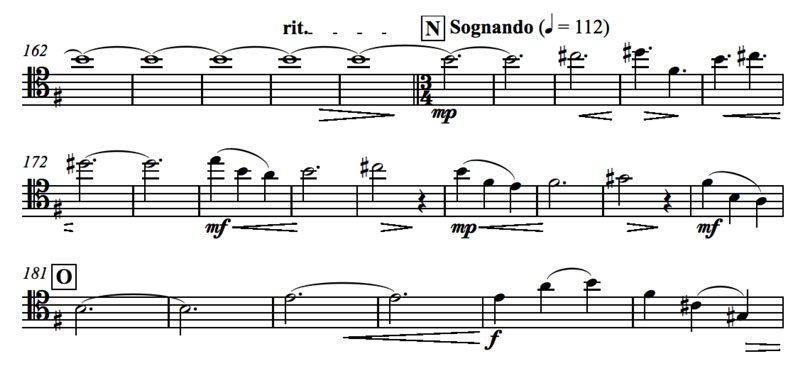The orchestrator needs to understand how difficult it is to make the double bass speak well, and to what lengths players go to get the ideal sound. There are a number of different considerations, but I’ll touch on the three most important here.
The first is what choice of bow. The most common bow that players use is the German bow, which is shorter and capable of a powerful attack. It gives the player the kind of sound that’s perfect for big, aggressive Romantic playing. The bow can hit the strings more securely in accents, staccato, and saltato. But there’s also a price – the bow’s limited span means that it’s hard to play loudly on long notes, or to sustain those notes. What’s more, it’s not great for expressive playing. Some solo bassists favor the French bow, which is longer and lighter. This bow gives the player a more natural, lyrical feel – just watch the Bottesini concerto below. That player is using a French bow (on a 3-stringed bass!). But then again, the French bow doesn’t have the sheer power of the German bow.
The next consideration is rosin. There are several different types of rosin, each with a different level of hardness or stickiness. A player may have to choose which rosin carefully depending on the moisture and temperature of the hall (and perhaps even depending on the nature of the work to be played). In general, the rosin is stickier than that of the other strings, because the bow really has to get a grip on what is essentially a low-tension cable, and get some kind of sound out of it. The line scored by a composer may be dependent on whether the bassist can get the string to speak, and there are certain passages in the repertoire that are real challenges in this regard.
The last major consideration is the composition of the strings. There is a reason why bass parts sound so tubby on old 1950’s recordings, and so smooth on 1980’s recordings. The reason is that players have changed from gut to steel. Gut strings have a twangier, “thumpier” sound, and are set higher above the fingerboard. With steel, however, the strings may be set much closer to the fingerboard, enabling the player to have a more natural sound over a much greater range.
In the sample below from my bass concerto, the player is soaring over a floating, pulsing accompaniment from the string section. There’s no way of making this sound generous and silky with gut strings – I’m relying on that sound for the best effect.









